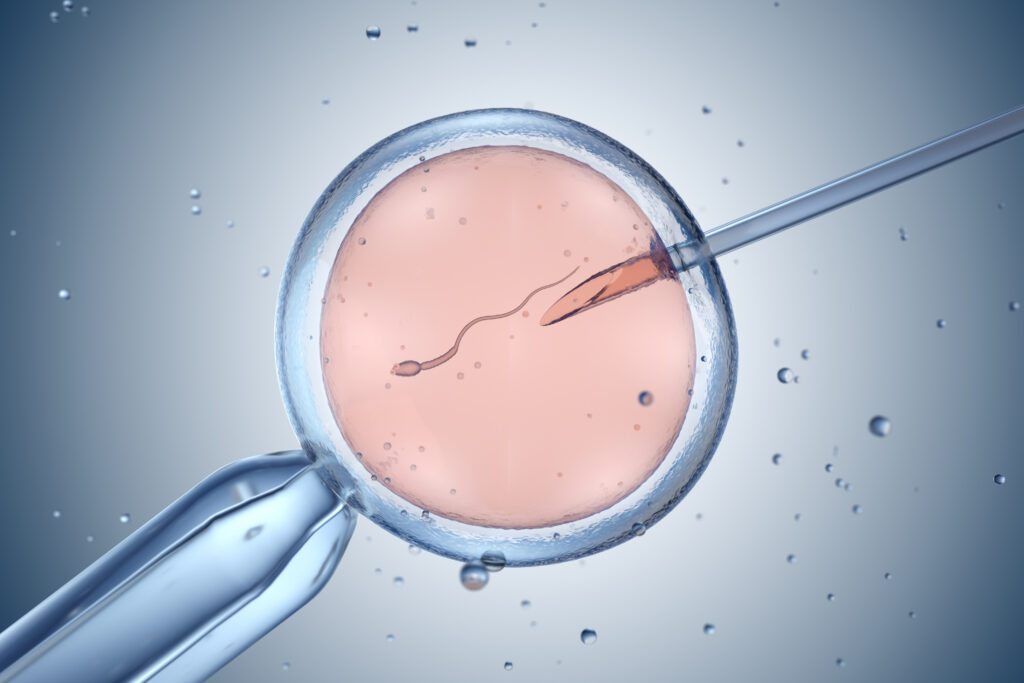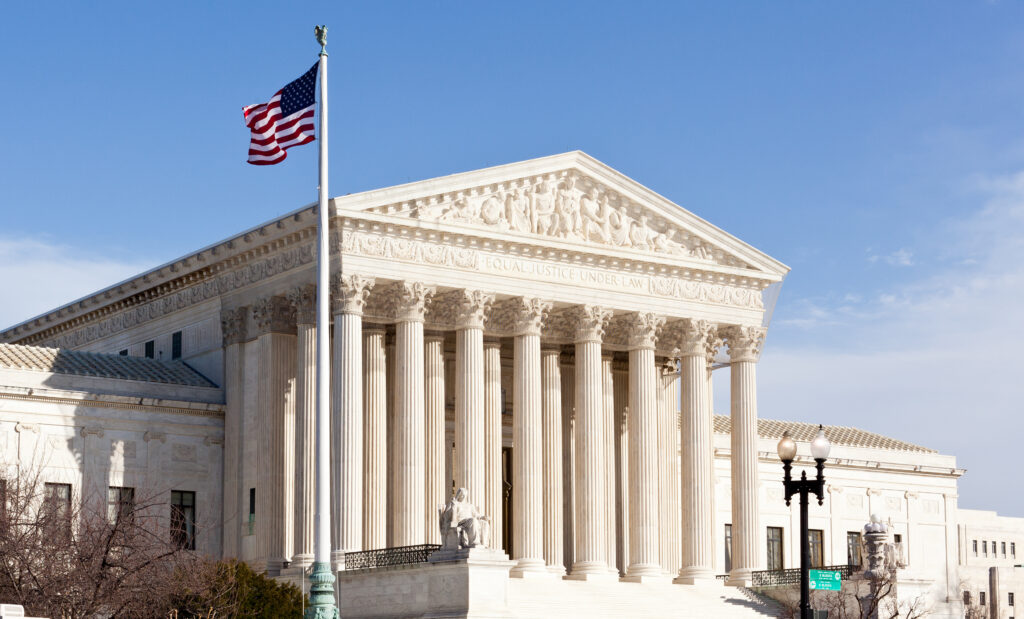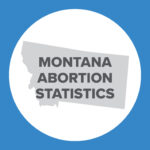Title X Litigation Update: What’s Next for Trump’s Protect Life Rule after Huge Win in Ninth Circuit?
This is Issue 44 in the On Point Series.
In February 2019 the Trump administration finalized the Protect Life Rule, a new regulation governing Title X of the Public Health Service Act. Title X is the federal family planning program. The Protect Life Rule, as summarized by the U.S. Department of Health and Human Services (HHS), “ensures compliance” with the “statutory prohibition on funding programs where abortion is a method of family planning” and “no longer permits Title X-funded family planning services at the same location where abortion is provided.”
Abortion advocates ferociously attacked the Protect Life Rule in federal court. Eight separate lawsuits were filed in federal district courts, two in California, two in Oregon, two in Washington state, one in Maine, and one in Maryland.
Susan B. Anthony List has participated as amicus curiae in the Title X Protect Life Rule litigation. Represented by the Thomas More Society, an elite national public interest law firm, SBA List has filed an amicus brief in the Ninth Circuit as well as in every district court case (including two briefs filed in the Washington case, one at the preliminary injunction stage and one at the summary judgment stage).
On August 19, 2019, as reported by Susan B. Anthony List, “Planned Parenthood – the nation’s largest abortion business – announced it will drop out of the Title X program and forego nearly $60 million in taxpayer funding rather than comply with President Trump’s Protect Life Rule . . . .”
Six months later, on February 24, 2020, the Trump administration won a major victory in court, when the U.S. Court of Appeals for the Ninth Circuit ruled in favor of the Protect Life Rule.
Summary of Litigation Status
As of March 28, 2020, the Protect Life Rule is in effect nationwide except for in Maryland.
- Ninth Circuit cases (California, Oregon, and Washington). On February 24, 2020, the Ninth Circuit ruled in favor of the Protect Life Rule, vacating preliminary injunction orders (two of them with nationwide scope) issued in California, Oregon, and Washington.
Plaintiffs have until April 9, 2020 (i.e., 45 days from February 24) to seek rehearing in the Ninth Circuit.
Further, the Ninth Circuit did not address constitutional claims asserted by plaintiffs, as the preliminary injunction orders did not rest on these claims, and on appeal the plaintiffs did not raise these arguments as an alternative basis for upholding the injunctive relief. Expect additional litigation on these claims when the cases remand to the district courts.
- A preliminary injunction order issued by the U.S. District Court for Maryland has been stayed pending appeal by the U.S. Court of Appeals for the Fourth Circuit.
However, even as the Maryland preliminary injunction appeal proceeded in the Fourth Circuit, the district court also entered a permanent injunction, leading to a second appeal to the Fourth Circuit. The permanent injunction remains in effect pending appeal.
- The federal district court in Maine denied plaintiffs’ motion for preliminary injunction. An appeal to the First Circuit was dismissed based on stipulation of the parties. Back at the district court the parties in the Maine case continue to litigate the matter of summary judgment.
The Ninth Circuit cases (California, Oregon, and Washington)
The Protect Life Rule is similar to earlier regulations upheld by the U.S. Supreme Court in the 1991 Rust v. Sullivan case. Nevertheless, district courts in California, Washington, and Oregon entered preliminary injunction orders stopping the rule from taking effect.
The preliminary injunction orders issued by the Oregon and Washington courts extended nationwide; the preliminary injunction order issued by the California court applied only to enforcement of the Protect Life Rule in California.
Each of these district courts falls under the intermediate appellate jurisdiction of the U.S. Court of Appeals for the Ninth Circuit. After losing in the district court the Trump administration appealed to the Ninth Circuit.
- On June 20, 2019 a three-judge Ninth Circuit panel granted the government’s request for a stay pending appeal thus allowing the rule to take effect.
- On July 3, 2019 the Ninth Circuit granted en banc review, meaning review by a larger panel of judges. This ruling was an “extraordinary” measure given that the three-judge panel had ruled only on the stay motion and not yet on the underlying merits of the appeal.
- On July 11, 2019 the en banc court refused to overturn the stay order thus allowing the Protect Life Rule to stay in effect pending appeal.
- On February 24, 2020 the en banc court, by a 7-4 margin, ruled in favor of the Protect Life Rule, vacating the district court orders of preliminary injunction and remanding to the district courts “for further proceedings consistent with this opinion.”
The acclaimed legal analyst and federal court expert Ed Whelan described the Ninth Circuit en banc ruling as “an important victory for the Trump administration” and a “big defeat” for Planned Parenthood.
Whelan also explained how the victory “surely owes” to the success of President Trump at increasing the number of conservative judges on the Ninth Circuit.
- Whelan observes that the 7-4 vote divided “along ideological lines (or at least along lines of party of appointing president).”
- As Whelan notes, in the Ninth Circuit “[t]he Chief Judge is automatically on every limited en banc panel,” meaning 10 of the 11 judges, as provided for by Ninth Circuit rules, were “drawn by lot from the active judges of the Court.”
- “The fact that seven of the other ten judges drawn to be on the panel were appointed by Republican presidents,” says Whelan, “surely owes to President Trump’s success in markedly increasing the size of that cohort: from 7 to 13 of the 29 judges in active service” (with “probably only 11 or 12 Republican appointees at the time of the draw” the previous summer).
Plaintiffs in the Ninth Circuit cases have until April 9, 2020 (i.e., 45 days from February 24) to seek rehearing by the limited en banc court or en banc review by the full Ninth Circuit. The Ninth Circuit is so large that en banc review is typically conducted by an 11-judge panel, not the full circuit. Under Circuit Rule 35-3, further en banc review by the full court remains a possibility. According to Whelan, however, “[t]he Ninth Circuit has never decided to have a full en banc rehearing of a limited en banc panel ruling,” and Whelan “doubt[s] very much that [the Ninth Circuit] will exercise that option here.”
Further, even once the preliminary injunction appeals have concluded, further litigation on additional claims will likely commence in one or more of the district courts. The February 24, 2020 en ban opinion explains that, in addition to challenges brought under the Administrative Procedure Act, plaintiffs had also “brought various constitutional claims, but the district courts did not base their preliminary injunctions on these claims.” Because on appeal the plaintiffs did not raise these claims “as alternative grounds for affirming the district courts’ grants of injunctive relief,” the arguments were waived for purpose of the en banc appeal. But those arguments would be in play back in the district court in summary judgment motions seeking permanent relief and any district court rulings on those arguments could then result in additional appellate court litigation.
California cases after February 24, 2020 Ninth Circuit en banc ruling
Two cases pend in the U.S. District Court for the Northern District of California (docket numbers 3:19-cv-01195 and 3:19-cv-01184). The same judge currently presides over both cases. The cases have not been consolidated.
During the Ninth Circuit appeal process, litigation had continued in the Northern District of California in both cases. The parties briefed summary judgment and the court held a motion hearing in both cases on February 20, 2020.
Following the February 24, 2020 Ninth Circuit en banc ruling, the plaintiffs in both California cases asked the district court to hold the summary judgment issue in abeyance pending potential further appellate review. On March 12, 2020, the district court granted that request, announcing it would hold the pending motions in abeyance.
The district court has scheduled a status conference for June 18, 2020.
Oregon cases after February 24, 2020 Ninth Circuit en banc ruling
Two cases pend in the U.S. District Court for the District of Oregon (docket numbers 6:19-cv-00317 and 6:19-cv-00318). The same judge currently presides over both cases. The court consolidated the cases for pretrial purposes.
After the Ninth Circuit granted en ban review, the Oregon district court stayed proceedings pending review by the Ninth Circuit.
As of March 28, 2020, the docket in the Oregon case shows no activity following entry of the February 24, 2020 Ninth Circuit en banc ruling.
Washington cases after February 24, 2020 Ninth Circuit en banc ruling
Two cases pend in the U.S. District Court for the Eastern District of Washington (docket numbers 1:19-cv-03040 and 1:19-cv-03045). The same judge currently presides over both cases. The court consolidated the cases, ordered all future filings to be submitted in docket 1:19-cv-03040, and administratively closed case number 1:19-cv-03045.
During the Ninth Circuit appeal process, litigation had continued in the Eastern District of Washington with parties filing summary judgment briefs.
On March 6, 2020 the district court announced it would hold the case in abeyance pending any further appellate review of the February 24, 2020 Ninth Circuit decision. The court ordered the parties to file a joint status report on or before June 5, 2020.
The Maine case
One case pends in the U.S. District Court for the District of Maine (docket number 1:19-cv-00100).
After the district court in Washington entered a nationwide injunction against the Protect Life Rule, the plaintiffs in the Maine case sought to withdraw their motion for preliminary injunction as moot.
However, one day after the three-judge Ninth Circuit panel allowed the Protect Life Rule to go into effect, the Maine plaintiffs sought to reopen their motion for preliminary injunction.
On July 3, 2019, the Maine district court denied plaintiffs’ motion for preliminary injunction. The court explained that “[a]bortion services in this day and age are more readily available than they have ever been” and “it appears that reconfiguring the model for delivery of abortion services has never been easier . . . . As is true of a great many other freedoms that are not subsidized by the federal government,” the court wrote, “it is up to private individuals to determine whether it thrives or not and they can advance their respective interests in the usual ways people do in a law-abiding, free democratic society.”
On August 9, 2019, the court denied plaintiffs’ request for an injunction pending appeal, citing among other things that “Plaintiffs [had] influenced the timing of their appeal by withdrawing their motion for injunctive relief for a two-month period.”
Plaintiffs appealed to the U.S. Court of Appeals for the First Circuit (docket number 19-1836). On October 23, 2019, upon stipulation by the parties, the First Circuit dismissed the case.
The case is now back in the district court with litigation proceeding on the matter of summary judgment.
The Maryland case
On April 12, 2019 the Mayor and City Council of Baltimore challenged the Protect Life Rule in a lawsuit filed in the U.S. District Court for the District of Maryland (docket number 1:19-cv-01103).
On May 30, 2019 the district court granted plaintiff’s motion for a preliminary injunction as to enforcement of the Protect Life Rule in Maryland. The government filed an interlocutory appeal with the U.S. Court of Appeals for the Fourth Circuit (docket number 19-1614).
On July 3, 2019 a three-judge Fourth Circuit panel, by a 2-1 vote, granted the Trump administration’s request to stay the preliminary injunction pending appeal and entered an accelerated briefing order.
The Fourth Circuit heard oral arguments on September 18, 2019.
Although the order of injunction was stayed pending appeal, proceedings in the district court were not. On February 14, 2020, the district court issued an order permanently enjoining the government from implementing or enforcing the Protect Life Rule anywhere in Maryland.
The Trump administration appealed the permanent injunction order (docket number 20-1215). The Trump administration asked the Fourth Circuit to stay the permanent injunction order pending appeal. The Mayor and City Council of Baltimore asked the Fourth Circuit to grant initial hearing en banc.
In late March of 2020 the Fourth Circuit (1) denied the Trump administration’s request to stay the permanent injunction pending appeal (2) granted Plaintiff’s motion for initial hearing en banc and (3) consolidated the second appeal with the first appeal under docket number 19-1614. The second appeal is currently in supplemental briefing.
Potential Supreme Court review
One question is whether litigation of the Title X Protect Life Rule litigation is likely to reach the U.S. Supreme Court. In the federal court system, cases typically start at the district court level, are then considered by the intermediate appellate courts (called “circuit courts”), and then, if at all, by the U.S. Supreme Court.
The eight Protect Life Rule cases fall under the intermediate appellate jurisdiction of three circuit courts, the First Circuit (the Maine case), the Fourth Circuit (the Maryland case), and the Ninth Circuit (the California, Oregon, and Washington cases).
Very few cases are heard by the U.S. Supreme Court. In this litigation, factors that would make Supreme Court review more likely include
- Whether one of the federal circuit courts rules against the Protect Life Rule despite the Supreme Court’s 1991 Rust v. Sullivan
- Whether a split emerges in how the circuit courts resolve the issue.
At this point, there is no appeal in the First Circuit, the Fourth Circuit appeals remain underway, and we can’t rule out the possibility of yet more appellate review in the Ninth Circuit on the preliminary injunction orders. Further, back at the district court level, plaintiffs in one or more of the Ninth Circuit cases will likely pursue additional claims that have yet to be decided, with the potential to result in yet additional appellate litigation.
In other words, we still don’t know how key factors affecting Supreme Court review will shake out.
Thomas M. Messner, J.D. is Senior Fellow in Legal Policy at the Charlotte Lozier Institute.

























